Desert Rhino Camp
Desert Rhino Camp will be temporarily closed for rebuild from 7th Dec, 2023. The new DRC reopening will be 1st July, 2024.
Desert Rhino Camp lies amongst rolling, rocky hills of the 450 000-hectare Palmwag Concession. This region is marked for its tranquil, minimalist beauty, surprising wealth of arid-adapted wildlife and the largest free-roaming black rhino population in Africa.
Set in a wide valley, accommodation at Desert Rhino Camp consists of eight raised Meru-style canvas tents with front verandas to take in the sweeping views in front dotted with scattered euphorbia and ancient welwitschia plants, and the dramatic Etendeka Mountains. The comfortable tented dining and lounge area is also elevated with partially open sides offering those panoramic views while a swimming pool provides a refreshing respite during the midday heat. Evening meals are often taken around the fire pit under the starry skies, known for their clarity.
Highlights
- Adventurous rhino tracking activities take place daily from camp
- A surprising wealth of arid-adapted wildlife in this harsh but beautiful land
- Collaborative effort between Wilderness Safaris and the Save the Rhino Trust (SRT)
The camp has eight comfortable Meru-style tents and a main area that overlooks a sweeping plain that is dotted with Namibia’s national plant, the welwitschia. The campfire is where stories are told under Namibia’s star-studded skies.
Standard Tents
There are eight standard tents which are made up of six twin bedded tents and two double bedded tents. There is one twin guide/pilot room which smaller than a standard tent.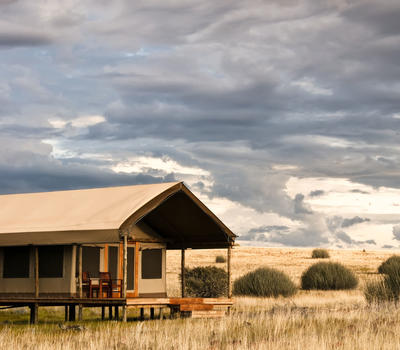
Rhino tracking on foot and by vehicle
We typically set out in the morning on game drive vehicles, behind the Save the Rhino trackers, who keep records on where and when previous rhino were seen. This enables them to track the rhino, although due to the vast terrain we sometimes drive long distances to view them. Once we have located an animal, tracking by foot can take place depending on the position or location of the rhino.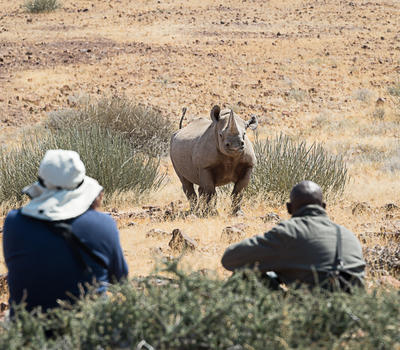
Game Drives
Game drives showcase the magnitude of the landscape and offer the best possibilities of seeing desert-adapted wildlife including rhino, elephant, giraffe, antelope, zebra and maybe even the area’s predators.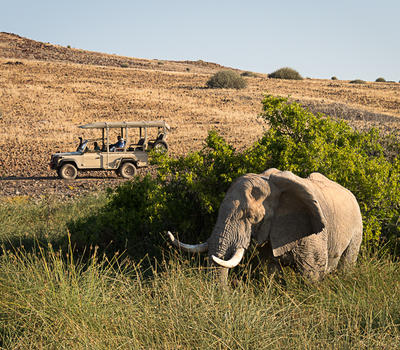
Guided nature walks
Learn more about the smaller flora and fauna that live in this incredibly harsh environment. Adaptation to the desert environment is the miracle of all that survives here.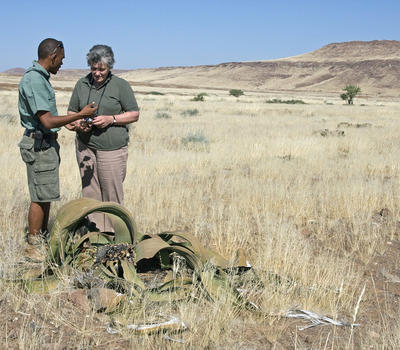
Full day outings with picnic lunch
Travel amongst rolling, rocky hills with scattered euphorbia, ancient welwitschia plants, scrubby vegetation and isolated clumps of trees through the 450 000-hectare Palmwag Concession and search out the fascinating desert-adapted wildlife of the region.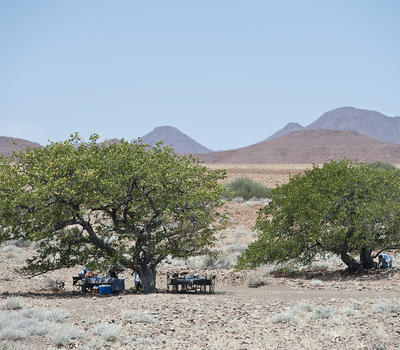
Birding
Birding enthusiasts are sure to enjoy the diverse avifauna found in the Palmwag Concession. Key species to look out for include Rüppell's korhaan, Benguela long-billed lark and possibly Herero chat with some focused searching. Verreauxs' eagle is often sighted around rocky hillsides.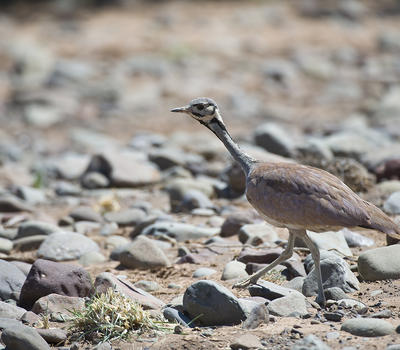
For more information on Desert Rhino Camp click HERE
To view videos of Desert Rhino Camp click HERE.
